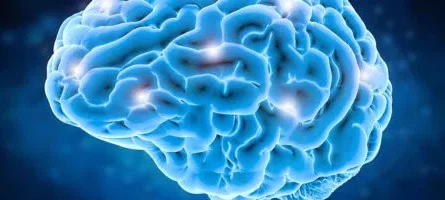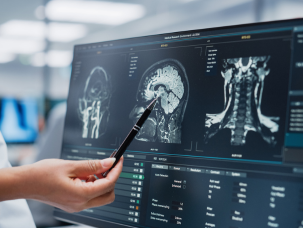What is the Brain Made Of?
The brain is composed of 40 percent gray matter, which is made of neurons, and 60 percent white matter, which is made of dendrites and axons that the neurons utilize. The two types of prominent brain cells are the glial cells and the neurons. While neurons in the brain play the lead role, glial cells outnumber neurons in different areas throughout the brain. The support of glial cells allows neurons to be powerful and efficient. These two types of brain cells work together to make up the magic of the brain.

Neurons – Building Blocks of the Brain
The average adult human brain contains approximately 100 billion neurons. What is a neuron? Neurons are the brain’s messengers, sending information all over your body. Chemical and electrical signals are sent and received between neurons in the brain and throughout the nervous system to muscles and tissues. These signals tell your body what to do.
There are three classes of neurons:
- Sensory neurons transmit sensory information from organs, such as the eyes and ears, to the brain.
- Motor neurons send information from brain cells to muscles throughout the body. Motor neurons are also in charge of voluntary muscle movements like speaking.
- Interneurons are all of the other neurons that don’t fit into sensory or motor categories.
Anatomy of a Neuron
Neurons are made up of three main parts – the cell body, the axon and the dendrites.
- The cell body, also called the soma, holds the nucleus of the cell, where the cell’s genes are located. The nucleus tells the cell what type of signals and impulses to send out. The impulses that are sent may also be referred to as the action potential.
- The axon is an extension of the cell body that looks like a long tail. The action potential from the cell body travels to the axon. At the end of the axon, the action potential triggers the release of neurotransmitters to another cell. The signals sent from the axon then transmit through a synapse and are received by a neighboring cell’s dendrites.
- The synapse is a small space between cells that neurotransmitters move across.
- Glial cells such as oligodendrocytes may be located along a neuron’s axon.
- Dendrites act like branches off of the main cell body. They receive information from a nearby cell’s axon terminals. Dendrites take in the signals to the cell body to trigger the firing of another action potential if needed.
Glial Cells
Glial cells, also called neuroglial cells, were originally thought to do nothing more than hold the nervous system together like a glue. “Glia” is Latin for glue. We now know that glial cells have important functions. They can communicate among each other and with neurons. Glial cells also aid in the healthy function of neurons and function as a neuron support system. Though there are many types, the three most important types of glial cells are oligodendrocytes, microglial cells and astrocytes.
Oligodendrocytes wrap around the axon of the neuron and make up a fatty myelin sheath to act as insulation for the area the cell body signals flow through. This protective insulation of the axon allows for high speed transmission of signals over long distances.
Microglial cells are constantly surveying different areas throughout the brain for signs of distress, disease and infection. When a microglial cell observes danger, it sends out an alert to other microglia. This triggers a swarming of microglia in the target area where they work together to clear out any debris and buildups. When there is no longer any danger, they go back to a resting state of constant surveying.
Astrocytes are star-shaped cells that surround neurons. Astrocytes are the most abundant of all glial cells and have many very important functions. The overall function of astrocytes is to keep the brain in homeostasis, which is the state of being in healthy equilibrium. Astrocytes aid in homeostasis in many ways. They release nutrients to the neurons to help them in their ability to transmit messages. They also take over the insulative function of oligodendrocytes when there are none present on a neuron and they can also respond to danger alerts sent out by microglia to help with immune defense. Astrocytes are highly valuable and versatile cells.
Brain Tumors Arising from Glial Cells
Primary brain tumors are classified by the type of brain tissue in which they develop. The most common brain tumors are called gliomas, which begin in glial tissue (the glia). Although glial cells are important to the healthy function of neurons and the central nervous system, tumors can arise from astrocytes and oligodendrocytes. Most brain tumors (benign and malignant) develop from glial cells and other non-neuronal (not neurons) cells. Other malfunctions of glial cells may lead to Parkinson disease and Alzheimer disease. Two common types of gliomas (brain tumors) originating from glial cells include:
- Astrocytomas, which arise from astrocytes and may grow anywhere in the brain or spinal cord. Adults most often develop astrocytomas in the cerebrum. In children, astrocytomas arise in the brainstem, cerebrum and the cerebellum.
- Oligodendrogliomas develop from oligodendrocytes, most often arising in the cerebrum. These tumors grow slowly and usually do not spread into surrounding brain tissue.
At Neurosurgical Associates of Central New Jersey, our neurosurgeons specialize in treating complex brain disorders using advanced techniques and state-of-the-art technologies. Contact one of our specialists today to discuss any concerns or questions you may have about brain and spine conditions.



